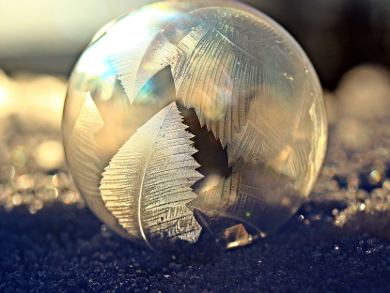Fish and other organisms that live in icy climates have evolved so-called antifreeze proteins (AFPs), which protect them from damage caused by freezing body fluids. The proteins attach to tiny ice crystals and prevent them from growing and recrystallizing. Such antifreeze proteins could have applications, e.g., in cryopreserving tissue or cells and in preventing ice growth on airplanes, on wind turbines, or in frozen food. However, AFPs are expensive, potentially toxic, and could cause allergies. Synthetic alternatives would, therefore, be useful.
Peter Scott, Matthew I. Gibson, and colleagues, University of Warwick, Coventry, UK, have developed helically-shaped iron complexes that can inhibit ice growth at low concentrations. The team combined different chiral NN–NN bis(bidentate) ligands (i.e., ligands with two binding sites, each containing two N atoms) with iron(II) chloride to form the complexes. In the products, three molecules of the respective ligand connect two iron centers and their three “strands” form a helically twisted structure.
The structure of the metallohelices causes their outer surface to be hydrophobic in some places and hydrophilic in others (amphipathic structure). This mimics the properties of many known AFPs, which can adsorb to ice surfaces on one side and thus prevent crystal growth. The team investigated the compounds’ antifreeze activity by observing their influence on ice recrystallization under a microscope. They found that the most active compounds completely inhibited ice growth at a concentration of 20 μM. According to the researchers, these results show the potential of metal-organic antifreeze protein mimetics and provide insight into the mechanism of ice-growth inhibition.
- Antifreeze Protein Mimetic Metallohelices with Potent Ice Recrystallization Inhibition Activity,
Daniel E. Mitchell, Guy Clarkson, David J. Fox, Rebecca A. Vipond, Peter Scott, Matthew I. Gibson,
J. Am. Chem. Soc. 2017.
DOI: 10.1021/jacs.7b05822
